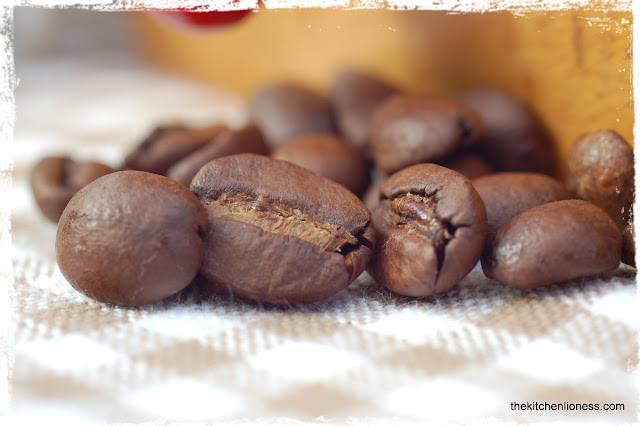Following are pictures of some of my most treasured Easter baking pans, most of them are vintage but some of them are new and were modeled after the originals. I started collecting these baking pans many years ago.
These seasonal baking pans come in a variety of sizes and designs, there are sheep...
...and Easter bunnies with an Easter egg.
Some of them were are made of cast iron....
...and others are made of metal.
Then there are hens and roosters and more sheep, small one and bigger ones. But all have one thing in common, they are always two parts to each set, held together with metal clicks that have be be released after baking and in order to unmold the cakes before transferring them to the cooling racks.
Following is the translation of a recipe for a plain Marble Cake that I like to bake in these Easter baking pans. It was given to me in 1989 (the picture of the original recipe card is above) and I have been using it ever since.
Recipe for two Marble Cake Bunnies or Hens or Roosters or Sheep
(this recipe can also be baked in a Bundt pan, springform or loaf pan)
Ingredients for the Marble Cake
- 200 grams (1 cup) unsalted butter, room temperature
- 170 grams (3/4 cup) superfine (caster) sugar
- 1 package/2 1/2 tsp pure vanilla sugar (or 2 tsp pure vanilla extract)
- 4 eggs, use organic or free range whenever possible
- finely grated zest of a lemon, use organic if possible
- 200 grams (1 1/2 cups) AP (plain) flour, sifted
- 1/8 tsp fine salt (I use fine sea salt)
- 1 1/2 tsp baking powder
For the chocolate dough add:
- 2 tbsp dutch process cocoa powder
- 2 tbsp superfine (caster) sugar
- 3 tbsp dark rum or milk, room temperature
Preparation of the Marble Cake
- Preheat your oven to 175 degrees Celsius (350 degrees Fahrenheit).
- Butter and flour your baking pans, knocking out the excess. Make sure to attach the metal clips to the pans before continuing with the recipe.
- In the bowl of your electric mixer, beat the butter until creamy.
- Add the sugar and continue to beat until the mixture is light and fluffy, scraping down the sides of the bowl as needed.
- Beat in the vanilla sugar or extract.
- Add eggs, one at a time, beating well after each addition.
- Beat in the lemon zest.
- In a separate bowl, sift together the flour, the salt and the baking powder.
- With the mixer on low speed, add the flour mixture to the butter mixture and mix only until combined.
- Pour half the batter into the prepared pans.
- To the other half add the cocoa powder, sugar and rum or milk and mix only until combined. Do not overmix.
- Add the chocolate batter on top of the vanilla batter in the pans and carefully draw swirls through the batter to marbleize it. Very carefully place the filled baking pans on parchment lined baking sheets (to catch any eventual overflow) and slowly slide the baking sheets into the oven - holding onto the pans with oven mitts.
- Bake for about 45 to 60 minutes. Carefully take the pans out of the oven.
- Place on a wire racks to cool for about 10 minutes before removing the cakes from the pans to cool completely by releasing the metal clips first, then one side of the baking pan and then the other. Make sure to cut the cakes flush with the pans (using a serrated knife).
- Decorate as desired and use dark or white chocolate, just some powdered sugar or dessicated coconut for the sheep to give them that "furry" look.
These pans are just part of my ever-growing collection. And they are perfect for baking not only fabulous marble cake bunnies, but also vanilla sheep or coconut hens or chocolate roosters. The possibilties for baking delightful Easter cakes using these molds seem endless.














































